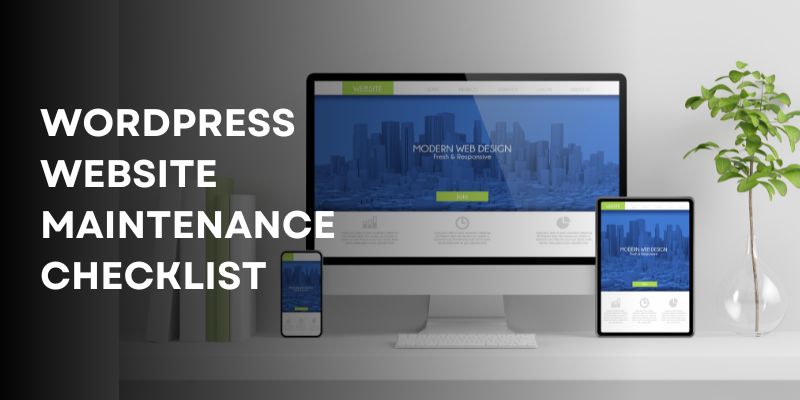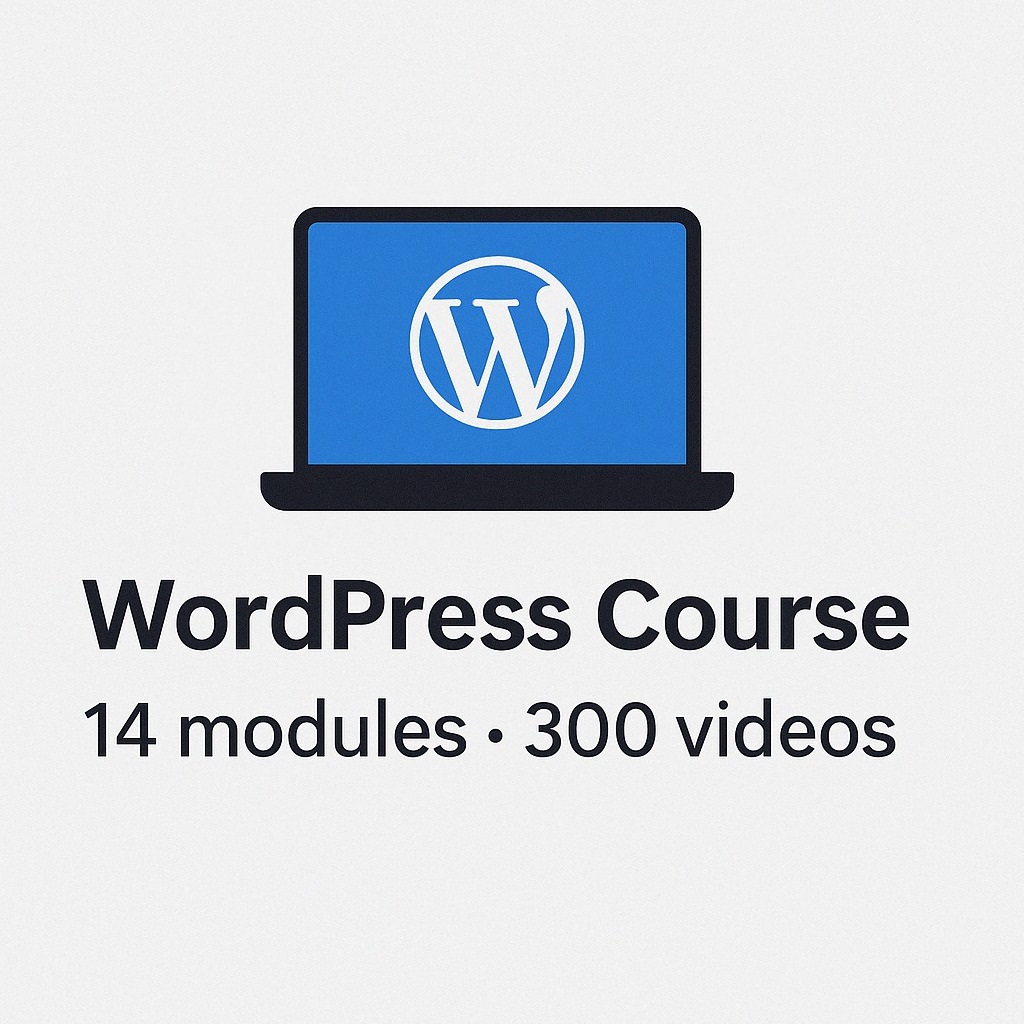
Table of Contents
- WordPress Website Maintenance Checklist
- Security Checks
- Performance Enhance
- Procedure for Backup
- Content Review
- Maintenance for SEO
- Evaluation of User Experience (UX)
- Observance of accessibility
- Law Adherence
- Monitoring Performance
- Participation of the Community
- Conclusion
Maintaining a WordPress website is not just about content and attracting visitors. It is about ensuring that your website is secure and runs well. In this detailed article, we’ll go over the necessary activities for WordPress website maintenance. Which keeping your WordPress website in good working order.
WordPress Website Maintenance Checklist
Security Checks
Regular security checks are critical to protect your site from unwanted attackers. Let’s examine some of the most crucial security precautions you ought to implement.
Update the core WordPress software.
Updating the WordPress core is the first line of defense against risks. Make sure you have the most recent updates installed as quickly as possible. It is help to address any known security issues.
Update your plugins and themes.
It’s common for hackers to access websites using out-of-date plugins and themes. Update all themes and plugins frequently. It is ensured they have the most recent security updates installed.
Perform security scans
To identify and reduce any security concerns on your website. Do routine security scans with dependable security plugins.
Review user permissions and access controls
Review and change user permissions on a regular basis to ensure that only those who require it have access. Make sure that user roles are properly assigned. It helps to prevent unauthorized access to sensitive portions .
Performance Enhance
Optimizing your website’s performance is critical for giving users a smooth browsing experience. Let’s look at how to make your website faster and more efficient.
Check website speed using tools like GTmetrix or Google Page Speed Insights
Use GTmetrix or Page Speed Insights to analyze your website’s performance data. It helps to identify areas for improvement.
Optimize images and media files
Compress and optimize photos and media assets to reduce file sizes while maintaining quality. This enhances the performance of the website as a whole and speeds up page loads.
Minify the JavaScript and CSS files.
Reduce extra characters and whitespace from CSS and JavaScript scripts. It is important to minimize file sizes and speed up page loading.
Activate the cache.
To save static copies of the pages on website use caching technology. This will speed up users’ access to the material and reduce server stress.
Procedure for Backup
Maintaining regular backups shields your data against loss in the case of an unforeseen circumstance. Let’s examine the primary procedures for WordPress site backups.
Regularly backup website files and database
Plan frequent backups of the files and database on your website. It ensures that in the event of an emergency, you always have a current copy of the content.
Examine the restoration procedure and backup fidelity.
To maintain the integrity of your backups, regularly restore them to a staging environment. This guarantees the completeness and convenience of your backup files when needed.
Utilize automated backup solutions
Simplify the backup process by utilizing automated backup systems. That can schedule backups at regular intervals and securely store them elsewhere.
Content Review
High-quality, up-to-date content is critical for engaging visitors and being relevant. Let’s look at ways to maintain your content fresh and error-free.
Update and publish new content regularly
Regularly produce new, relevant material. To keep your audience interested and attract new users to your website.
Review existing content for accuracy and relevancy
Review and update current material on a regular basis. To ensure that it is correct, relevant, and in line with the goals and preferences of your site’s audience.
Check for broken links and fix them
Broken links can have a detrimental influence on both user experience and SEO. Look for broken links on your website. Make the necessary corrections as soon as you can. Which ensure a seamless browsing experience.
Maintenance for SEO
Search engine optimization is essential if you want to raise your website’s profile and attract natural traffic. Let’s examine the fundamental SEO upkeep tasks for your WordPress website.
Ensure metadata is optimized for search engines
Use relevant keywords to enhance the visibility of your website on search engine results pages by optimizing its metadata, which consists of headers, descriptions, and titles.
Monitor keyword rankings
Use SEO tools to monitor your website’s keyword ranks in order to spot trends and areas that could benefit from optimization.
Submit sitemap to search engines
To make sure search engines can effectively scan and index the pages on your website, submit the sitemap to Google and Bing.
Evaluation of User Experience (UX)
Maintaining the satisfaction and attention of your website’s consumers is crucial. Let’s examine how to assess and improve your WordPress website’s user experience.
Test the functionality of a website using various browsers and devices.
To give every visitor a consistent experience, make sure your website is responsive and works perfectly on a range of devices and web browsers.
Check for usability issues
Find and fix any usability problems that could make it more difficult for users to navigate and interact with your website.
Solicit feedback from users
In order to gather information and make the required adjustments, ask visitors to share their experiences with your website via surveys, contact forms, or social networking platforms.
Observance of accessibility
It is essential that your website complies with accessibility rules in order to guarantee that it is usable by all users, including those with impairments. Let’s look at how to make sure your WordPress website complies with accessibility standards.
Ensure website meets accessibility standards (WCAG)
Find more about the Web Content Accessibility Guidelines (WCAG) and add accessibility features to your website to make it accessible to individuals with disabilities.
Check for keyboard shortcuts and screen reader interoperability.
Make sure users can browse and access content on your website with assistive technologies by testing keypad accessibility and compatibility with screen readers.
Correct any accessibility problems that you find.
Address any accessibility issues that are found during testing to ensure that your website is inclusive and accessible to all users.
Law Adherence
Keeping your website and its visitors safe from potential legal concerns requires maintaining legal compliance. Let’s examine the most important legal compliance needs for your WordPress website.
Review the privacy statement and terms of service
It will be easier to make sure that your website’s terms of wordpress service and privacy policy are up to date and compliant with all applicable laws and regulations if you regularly review them.
Make sure that the GDPR and any other relevant legislation are followed.
You may make sure that your website complies with data protection regulations by putting in place the appropriate security measures to safeguard user data, such as the General Data Protection Regulation (GDPR).
Verify for infringement of copyright – Overview
Make sure you routinely monitor your website for any instances of unauthorised use of copyrighted content, and take appropriate measures to resolve any infractions.
Monitoring Performance
It’s critical to keep an eye on the functionality of your website in order to spot and fix any problems that could affect its dependability and speed. Let’s look at some useful performance monitoring techniques for your WordPress website.
Install tools for monitoring websites
Track important performance indicators like uptime, page load times, and server response times by using website monitoring tools.
Track response times and server uptime.
Keep an eye on the server uptime and response times of your website to make sure that users can always access and interact with it.
Deal with any performance concerns right away.
Quick action is required to resolve any performance problems found during monitoring in order to reduce downtime and guarantee a flawless user experience.
Participation of the Community
Interacting with the community on your website makes users feel like they belong and promotes their involvement. Let’s look at some strategies for communicating with the WordPress community on your site.
Interact with users on social media and in comments.
By answering comments on your blog entries and interacting with your followers on social media, you may foster user connection.
Answer questions and provide comments.
Respond to people’s inquiries and remarks as soon as you can to demonstrate your commitment to attending to their needs and respecting their viewpoints.
Encourage a feeling of community on the webpage
Provide parts on your website with user-generated material, forums, and discussion boards as ways to foster community engagement and cooperation.
Conclusion
The secret to maintaining the best possible condition for your WordPress website is regular maintenance. You may make sure that your website is safe, functions well, and conforms with rules by following the checklist provided in this tutorial. Regular website maintenance is crucial for a website to be successful and healthy, so don’t undervalue it.

